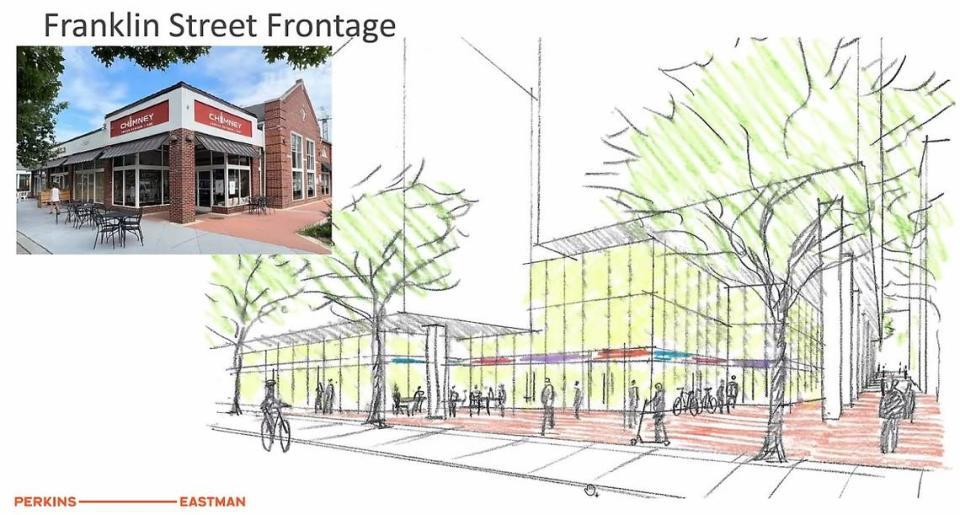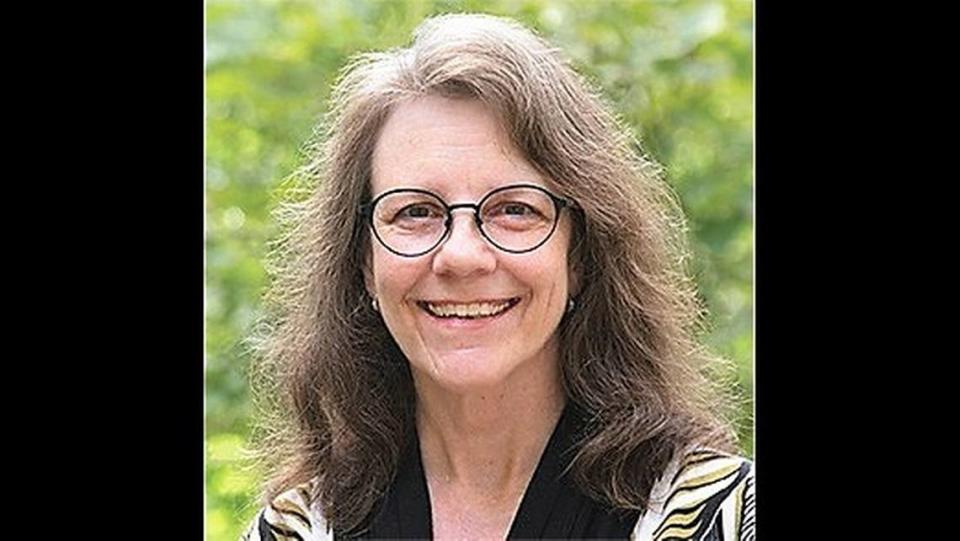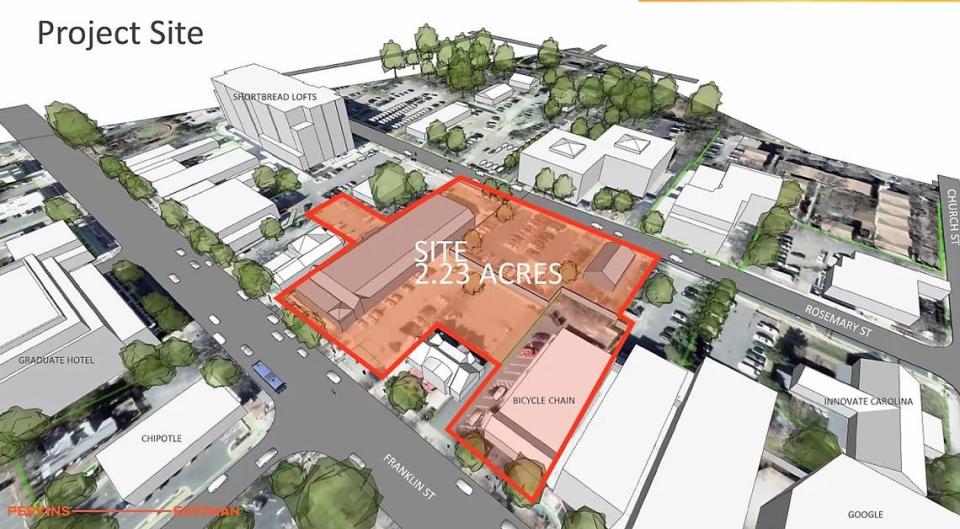Do advisory boards have value? Chapel Hill wrestles with how to streamline development.
A change in how Chapel Hill handles development plans could speed up and simplify the approval process, but remove one of the ways the public has to influence individual projects.
The town’s biggest hurdle to development is its policies, which have grown beyond what’s required by the town’s land-use rules, consultant Jennifer Keesmaat said earlier this year.
The town is paying The Keesmaat Group nearly $200,000 to guide discussions for the new Complete Community process, which is aimed at landing projects focused on more housing, sustainable density, greenway connections and fewer cars.
The town’s current system has created dysfunction, weeding out developers and increasing the cost of construction and housing, Keesmaat said. It also burdens town staff with hours of advisory board, developer and council meetings, giving them less time to study how projects meet town rules and goals, she said.
“It’s been pretty surprising for me, working here over the course of the past six months: a lot of people being burnt out, both council members and staff, a lot of people being very frustrated, being exhausted, and people wanting just to give up,” Keesmaat said.
The town can fix the problem, starting with a return to the basics spelled out in town land-use rules for concept plans, unofficial plans that developers submit early on to get feedback, and conditional zoning applications, she said.
“The main interest here is in providing some predictability, some simplicity, some clarity, and really just drawing back to what’s on the books in the LUMO (Land Use Management Ordinance) today for these plans,” Deputy Town Manager Mary Jane Nirdlinger told the council in February.

Proposed project review changes
Chapel Hill has has 18 advisory boards that address specific details in project plans or town policies on amenities like public art or recreation.
For most large projects, the process starts with a concept plan:
▪ Current process: The Community Design Commission, Housing Advisory Board and Stormwater Management Utility Advisory Board review the plan, followed by a council review.
▪ Proposed change: End the housing and stormwater board reviews. Use a checklist for building details, affordable housing and other conditions the town wants met in every project.
The next step is a conditional zoning application to build a project:
▪ Current process: Staff works with developers to ensure the project meets town requirements, while developers hold information meetings for the public.
The CDC, Planning Commission, and Housing, Environmental Stewardship, and Transportation and Connectivity advisory boards spend two to three months reviewing plans before making a recommendation to the council, which also holds public hearings before a vote.
An approved project faces more staff and CDC reviews, stretching the timeline from planning to construction to two years or more.
▪ Proposed change: The new process would only require reviews by the Planning Commission and the council. Both boards would still hold public hearings, and the Planning Commission would include “champions” who represent CDC and other advisory board interests.
The CDC would retain its role approving the final appearance of buildings and streetscapes, but it would not make a recommendation before the council votes. Most projects could be heard by the council within months under the new procedure, Nirdlinger said.
Other advisory boards and commissions would consider rules and policies in general, rather than their effect on individual projects.
Longfellow Real Estate Partners’ Chapel Hill Life Sciences Center planned for 306 E. Franklin St. could be the first test case for the checklist, Keesmaat told the council in January.
The council will review the concept plan March 22, which could lead to an official application.

Advisory board role in policy
Council member Adam Searing, who has pushed to end Keesmaat’s contract, questioned using the Longfellow project as a test case, saying it is unfair to affected residents.
It’s difficult to hear from those who disagree with unpopular council decisions, but the boards are another way residents can have a voice in council decisions, Searing said. He suggested the council first examine its own role in the dysfunction, from reviewing small projects, such as standalone banks, to “nitpicking” at details better left to staff, such as how to provide bathrooms in a parking deck.
“To me, a lot of the problem is the council. It’s not the process that we set up,” Searing said. “The board stuff, to me, seems to be … an indication that we’re just not that interested in what the public thinks, that we know what we want to do and we’re going to do it.”

Council member Amy Ryan said she was taken aback by the timing of the changes and February’s presentation, which seemed rushed and “disrespectful to our board members, and all the service that they do.”
While a higher-level view from advisory boards would be “valuable,” she said, the new process should be in place before making cuts.
“A lot of times, our boards have more time, they’ve got folks who are specialists in the area that they’re working in, so it’s really helpful for me when they can look at an issue and give me their opinion on it,” she said.
Council member Camille Berry pushed back on the concern about timing. Residents would still have ways to contribute, she said.
“I hope that we don’t make decisions just so that we can appease our community members rather than get substance, rather than get value from what they’re contributing,” Berry said. “If we’re doing it so that they can feel important, but they’re not contributing what we need, then that’s a waste of their time.”
Other members pushed for more, including an end to CDC reviews altogether.

Town staff, such as urban designer Brian Peterson, or the Planning Commission could handle those details, Council member Paris Miller-Foushee said. As it is now, Council member Michael Parker said, some advisory board members spend more time telling town staff how to do their jobs.
The boards, as a result, do not have “the same value that they could have if they were operating at much more of a policy level, and helping us think through the policies rather than enforcing those policies,” Parker said.
What that looks like has yet to be worked out, he said. Council member Jessica Anderson said that is concerning, because the council had asked for a “culture change on a lot of levels, and this is one tiny, tiny sliver.”
“I guess my worry is without having the bigger picture of all of this put together, we are not telling people what their policy role will be,” she said. “All we’re telling them is they’re getting kicked out of a role and saying we have a plan for you, we have a spot for you, we just haven’t decided what it is yet.”

Development clarity, enforcement
Advisory board leaders will meet again soon with town staff and Keesmaat to talk about the changes, Nirdlinger said.
“I was actually surprised by how many boards recognized that they weren’t adding a lot of value in the development review process and were interested in the policy change,” she said.
CDC members talked briefly after the council’s February meeting. Council meetings have become “very disquieting,” CDC Chair John Weis said.
“There are a number of council members who don’t think at all that the work that we do is valuable, and that is enough to make you feel bad,” Weis said. But “you’ve got to stand the ground and keep fighting, I think, and maybe teach people that we’re valuable.”
the Housing Advisory Board board planned to discuss the changes in March, said Chair Sue Hunter. However, she sees how the process and the variety of advisory board requests can be confusing for developers.
“Everyone wants to, for whatever process anyone engages in, they want it to be clear, they want to know what to expect, and I think that’s what the town is trying to accomplish by streamlining the process,” Hunter said.

Parker addressed the Environmental Stewardship Advisory Board’s questions in late February, emphasizing that the proposed changes would create a more predictable process for everyone.
“As long as the staff has enough time to actually look at these proposals and enforce what is in writing, because it’s a lot, and I think the board’s not comfortable,” board member Stefan Klakovich said before Parker cut him off.
“The reality is the boards and commissions don’t enforce anything,” Parker said. “I think this will, by putting it in the hands of staff as part of the technical review and making it defined policy, actually make it more enforceable rather than less.”
The Orange Report
Calling Chapel Hill, Carrboro and Hillsborough readers! Check out The Orange Report, a free weekly digest of some of the top stories for and about Orange County published in The News & Observer and The Herald-Sun. Get your newsletter delivered straight to your inbox every Thursday at 11 a.m. featuring links to stories by our local journalists. Sign up for our newsletter here. For even more Orange-focused news and conversation, join our Facebook group "Chapel Hill Carrboro Chat."

